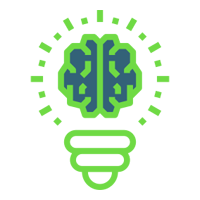| A) they are easily recognized and convey a lot of information | B) they help readers categorize a piece of literature |
| C) readers and viewers expect authors to use them | D) readers like everything longer and more complicated |
Explanation:
Archetypes were models of people, behaviors, or personalities. They were inborn tendencies that play a role in influencing human behavior.
For example: A hero, an innocent, the villain, the mentor, etc...

1. The mentor is a common archetype in literature. The mentor is usually old, and this person often has some kind of magical abilities or a much greater breadth of knowledge than others possess.
2. Characters representing the innocent archetype are often women or children. These character archetypes are pure in every way.
3. The villain wants to stop the hero archetype from achieving his or her goal. The villain is often evil, though there is often a reason—however warped that reason may be—why villains are so bad. Villains often want nothing more than to control and have power over everyone and everything around them.

 Aptitude and Reasoning
Aptitude and Reasoning General Knowledge
General Knowledge Puzzles
Puzzles Interviews
Interviews Technical
Technical Certifications
Certifications Exams
Exams Job
Roles
Job
Roles True or False
True or False Exams
Exams